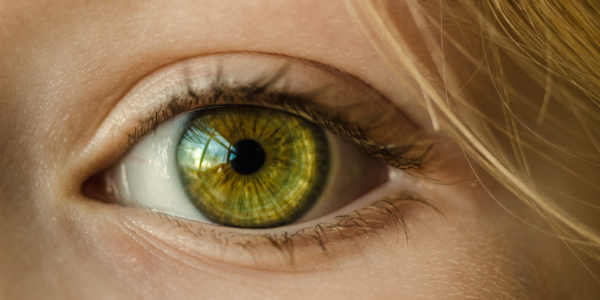TORONTO, May 26, 2020 – How does the brain determine what shade of colour our eyes are seeing? Vision researchers at York University have pinpointed the exact mechanism that allows the brain to do just that. In a study published in Scientific Reports, researchers at the Lassonde School of Engineering and the Center for Vision Research show how the brain can perceive a wide range of colours while being able to differentiate between, for example, magenta and lavender. There is still much debate on where and how in the brain such perceptions happen, but by creating a new mathematical model, researchers have found the brain achieves this by very simple calculations that use multiplication.
“If you’re looking at a particular shade of blue, is there somewhere in your brain that represents that blue? This study explains how the brain computes that blue and it gives you every step of processing in detail so that you can trace where things might go wrong,” says John Tsotsos, a professor in the Department of Electrical Engineering and Computer Science at the Lassonde School of Engineering.
The study found that a simple processing framework not only furthers our understanding of colour processing in the brain but may also help in testing these mechanisms in individuals who have shown less accurate colour discriminations than individuals in a control group.

Researchers took all the previous mathematical and theoretical models of colour processing – including data on how animal neurons respond to colour – and added the new component of multiplicative modulation. Using physiological evidence, they computationally modeled neurons from different areas of the brain involved in colour processing. The model lays out the progression of the colour signal in the brain in a step-by-step manner. By using this approach, they were able to provide a more comprehensive understanding of colour perception than had been possible previously.

“Our network of neurons was required to comply with existing knowledge of brain color cells,” says Paria Mehrani, a PhD student in Tsotsos’ Lab and lead author of the study. “Setting the properties of model neurons based on the statistics of some observed data could possibly result in cells with properties different from those of biological colour neurons. As a result, one could not have meaningful processes explaining the brain that way. In our model, however, certain colour processing aspects can be learned given data, especially in the last processing layer in our network. With such a model as foundation, machine learning can help further our understanding of other aspects of colour processing in the brain.”
Furthermore, the research team suggested their model sheds light on a specific kind of neural interaction. This information could prove useful in explaining poor colour discrimination and provide a pathway to a remedy in the future.
The study may also help inform the building of machine vision systems which need to have this process in place, says Tsotsos. “If you want to have as good colour discrimination as humans do, this study helps inform us on how to build that machine vision system.”
Researchers say those working in the development of AI systems that rely on discrimination of pure colours could benefit from this information: for example, autonomous car systems and agricultural vision systems that rely on colour discrimination to determine ripeness of fruits and vegetables.
York University champions new ways of thinking that drive teaching and research excellence. Our students receive the education they need to create big ideas that make an impact on the world. Meaningful and sometimes unexpected careers result from cross-disciplinary programming, innovative course design and diverse experiential learning opportunities. York students and graduates push limits, achieve goals and find solutions to the world’s most pressing social challenges, empowered by a strong community that opens minds. York U is an internationally recognized research university – our 11 faculties and 25 research centres have partnerships with 200+ leading universities worldwide. Located in Toronto, York is the third largest university in Canada, with a strong community of 53,000 students, 7,000 faculty and administrative staff, and more than 300,000 alumni.
York U's fully bilingual Glendon Campus is home to Southern Ontario's Centre of Excellence for French Language and Bilingual Postsecondary Education.
Media Contact: Anjum Nayyar, York University Media Relations, 437-242-1547, anayyar@yorku.ca

